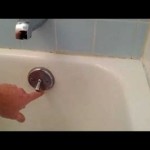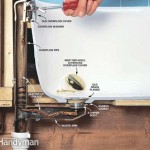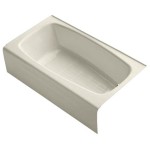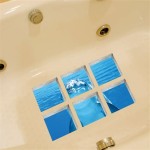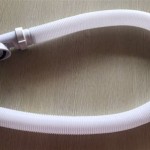Understanding the Mechanics of Bathtub Drain Systems Bathtubs, an essential fixture in many bathrooms, rely on a well-functioning drain system to ensure proper water drainage and prevent flooding. The bathtub drain mechanism is a combination of components that work together to efficiently remove water from the tub. Let's delve into the inner workings of a typical bathtub drain system. 1.
Drain Hole:
At the bottom of the bathtub, you'll find the drain hole, which is the primary point of water exit. It is usually covered by a drain stopper or plug that can be opened or closed to control the flow of water. 2.Drainpipe:
Connected to the drain hole is the drainpipe, a vertical pipe that carries wastewater away from the bathtub. The drainpipe connects to the main drainage system of the building, ensuring proper disposal of wastewater. 3.P-Trap:
Beneath the drain hole, you'll find a curved section of pipe called the P-trap. This U-shaped pipe serves as a trap that prevents sewer gases from entering the bathroom. It also acts as a barrier against small objects like hair or jewelry from entering the drainpipe and causing clogs. 4.Vent Pipe:
Connected to the P-trap is a vent pipe, which extends upward through the roof of the building. The vent pipe allows air to enter the drainage system, preventing the formation of negative pressure that could hinder the proper flow of wastewater. 5.Drain Stopper or Plug:
The drain stopper or plug is a small device that fits into the drain hole, preventing water from flowing out of the bathtub. It typically has a handle or knob that allows you to easily open or close it. 6.Overflow Drain:
Some bathtubs have an overflow drain located near the top of the tub. This drain is designed to prevent water from overflowing the bathtub in case the drain becomes clogged or the water level rises too high. The overflow drain is connected to the drainpipe, allowing excess water to drain away safely. Maintenance and Troubleshooting: To ensure the proper functioning of your bathtub drain, regular maintenance is essential. Here are some tips to keep your drain system in good condition: - Regularly clean the drain stopper or plug to remove hair, soap scum, and other debris that can accumulate over time. - Use a drain cleaner occasionally to dissolve buildup and prevent clogs. - Avoid pouring grease or oil down the drain, as these substances can solidify and cause blockages. - If you experience a clogged drain, try using a plunger or a drain snake to dislodge the obstruction. If the clog persists, it's best to call a professional plumber for assistance. By understanding the mechanics of your bathtub drain system and following proper maintenance practices, you can ensure the smooth and efficient flow of wastewater, preventing unpleasant odors and potential flooding issues.
How A Bathtub Works Types Plumbing Diagrams Hometips
How Do Bathtub Drain Closures Work Mine Leaks Quora

Bathtub Parts Everyone Should Know About Part Names 2024

Drain Overflow Assemblies Fine Homebuilding

How To Replace Bathtub Drain Stopper With A Lift And Turn Diy

Top 5 Tips On How To Unclog A Bathtub Drain Smiley Cleaning

Bathtub Drain System 2024 Guide Badeloft

Drain Overflow Assemblies Fine Homebuilding

How To Unclog A Shower Drain Without Chemicals Diy Family Handyman

How Does A Bathtub Overflow Drain Work

